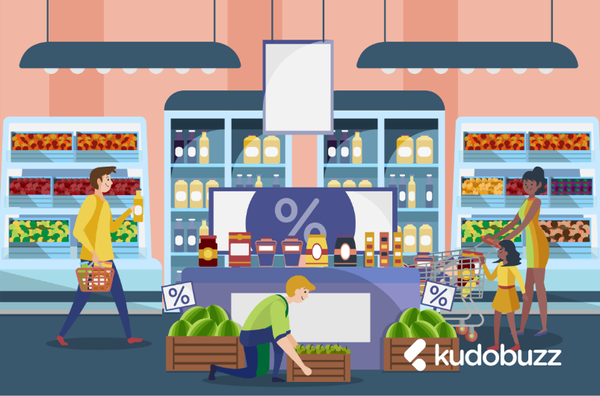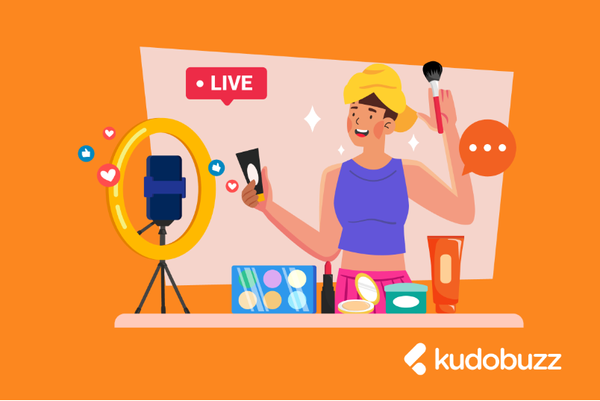If you’re hoping to increase your ecommerce revenue (and what store isn’t?), there are a few approaches you can take. Your first instinct may be to maximize your customer base or revenue sales — but it’s far more efficient to nudge your existing customers into spending more money before they click the checkout button. That means boosting the average order value (AOV).
However, this can be easier said than done. To help you along the way, we’ll run through five ways to boost your average order — with methods suitable for Shopify, Bigcommerce, and Wix. Some of our tips are specific to one site while others are suitable for any ecommerce platform under the sun. Let’s go!
Offer incentives
When you’re trying to encourage people to spend more on your site, you have to ask yourself: What’s in it for them? Often, you need to offer them something beyond the products you’re selling.
One of the most common ways to have this effect is by offering free shipping to customers who spend beyond a certain threshold. You’ve probably fallen victim” to this one yourself if you’ve ever justified spending $10 (or even $20) more to take advantage of the offer. And you’re not alone — 73% of US consumers say that free shipping influences their decision to make an order.
But you’ll need to put some thought into finding the magic number of how much customers should spend. Set the threshold too low and it could eat into your company’s profitability — but make it too high and customers may decide they’d rather pay for shipping than bother putting extra items into their cart. Generally, you don’t want to set the threshold too far above your AOV.
While free shipping is the most common incentive of this type, it’s not the only strategy you can employ along these lines. Some stores run promotions that offer discounts or free gifts for customers who spend a certain amount; for instance, 30% off if you spend $70 or more. This is a great way to incentivize your customers to spend significantly more than the average order value.
Loyalty program
There’s a reason that most major retailers offer some kind of loyalty program — it’s an effective way to encourage sales. Loyalty programs are mostly associated with incentivizing repeat transactions and keeping customers returning over time, and they certainly do a good job of this. But not all businesses realize they can also use them to boost their average order value.
If customers know that spending $30 more on their order will result in them earning x% cashback or receiving x number of points they can redeem for discounts, they’ll have an incentive to spend a little more.
This is especially true if you merge loyalty programs with some of the elements we’ve discussed already. For instance, why not run members–only events where customers can double their points or access exclusive discounts if they spend a certain amount?
Shopify: Use upselling and cross-selling apps
Upselling and cross-selling are two of the old tricks in the book when it comes to sales. They’re similar concepts, but let’s quickly clear up the difference: Upselling is about encouraging customers to upgrade their items (e.g., to a large meal), whereas cross-selling involves selling complementary items (e.g., eyeliner to a mascara customer).
You’ve already gauged interest and have an idea of what the customer likes, so why not use that to encourage them to spend more along the same lines? After all, you have a 60-70% chance of selling to the customers you already have, but only a 5-20% chance of selling to new customers.
The principles behind these tactics can be applied to just about any platform. But if you’re a Shopify user, the good news is that the platform makes both practices easier than ever. There are various apps in the Shopify App Store that push the right recommendations in front of customers. For instance, there’s the Zipify tool for upselling.
Wix: Use Velo
If you’re a Wix user, you also have a variety of tools at your disposal. Your path to custom-made features is Velo, known as Wix’s development mode. You’ll need to know how to use Javascript and/or APIs to get the most out of it, but you can always outsource the work to someone else if necessary.
Using Velo, there are various ways to bump up your average order value. These include:
- Displaying top-rated or most popular items on product pages
- Creating a quiz to help customers find the perfect product(s) for their needs
- Sending notifications when an item is selling quickly or low on stock
- Giving customers the option of bulk-adding products to their basket (good for complementary items)
BigCommerce: Use related products feature
We’ve already mentioned the importance of upselling and cross-selling, but you don’t need to be on Shopify to be able to take advantage. If you use BigCommerce, you can set up related products to nudge customers into adding more items (or a more expensive item) into their cart.
The platform contains a built-in feature, so all you have to do is enable it and let the algorithm get to work by choosing five products that have a similar name and description to your item.
However, if you want to go the extra mile or believe the products selected by the algorithm aren’t necessarily the most relevant, you can also complete the process manually — and in this case, you’ll be able to choose up to 50 products instead of just five.
BigCommerce has a guide about how to set both of them up.
Get ready to watch those numbers rise
If you want to boost your average order value, you don’t have to rely on wishful thinking. The five suggestions outlined above provide a mixture of concrete ways to start upping your profitability — whether you’re looking for a generic method that works with any eCommerce tool or a specific tool for Wix, Shopify, or BigCommerce.
Now, the only thing left is to choose the strategy you’re going to start with and jump straight in. But as all business owners know, the quest to increasing revenue never really ends. Why not try using Kudobuzz to add social proof to your products in the form of verified reviews and ratings from social media?









